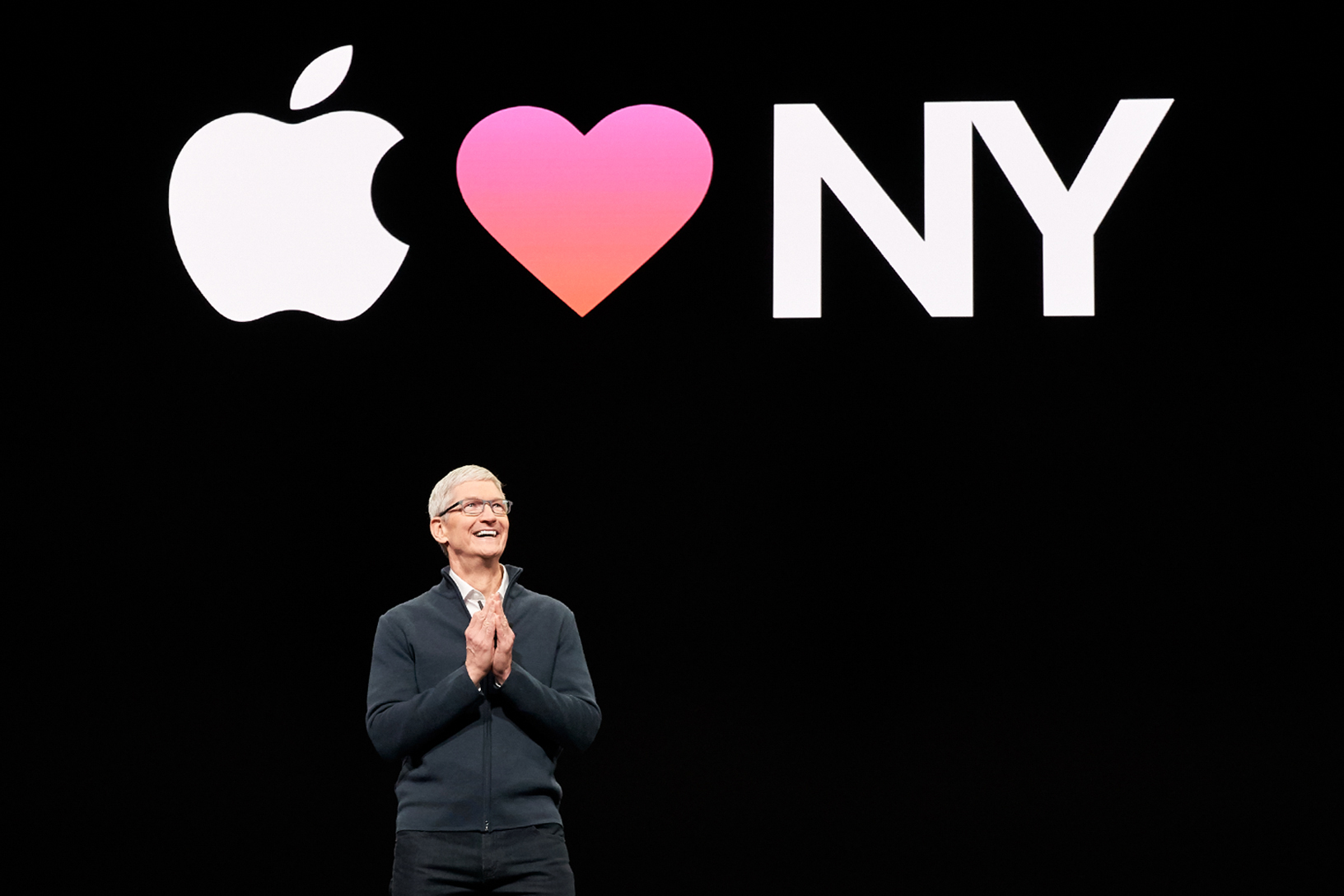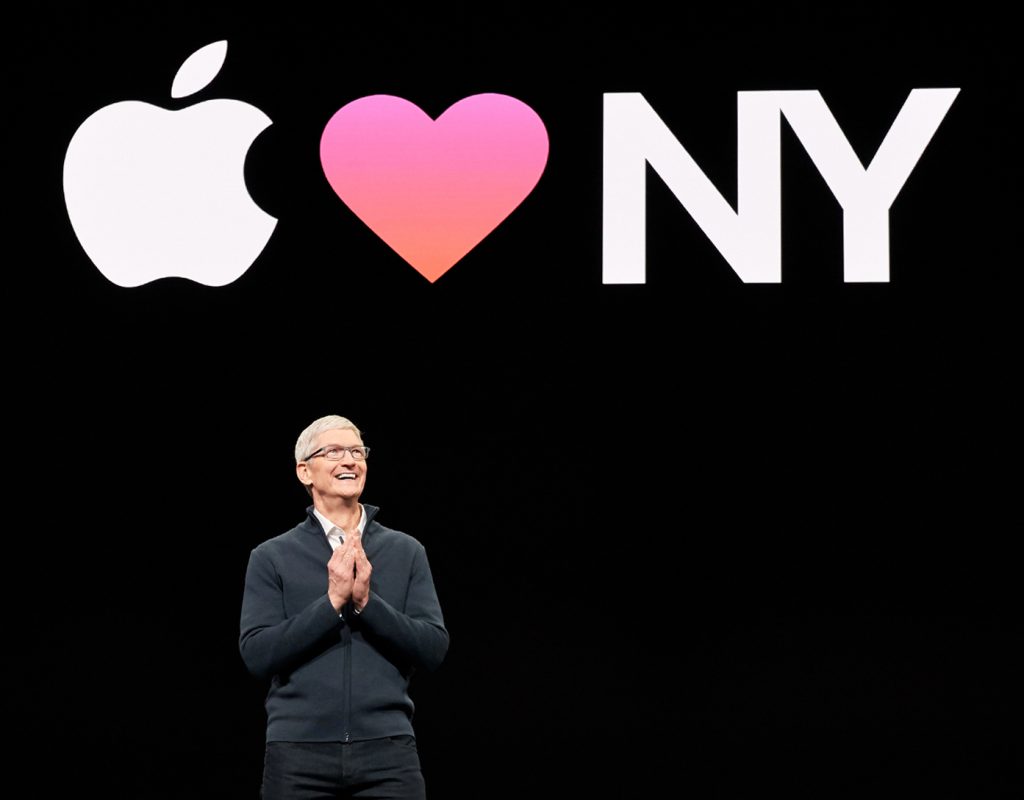
Yesterday, in a live event in Brooklyn, New York, Apple launched 3 key updates to iPad Pro, MacBook Air and Macbook Mini. Among many other things, this historic announcement marks the first iOS device with USB-C instead of Lightning, which in itself is extremely positive. Ahead, I’ll go over what I find great about many these improvements, some of which have been way overdue. I’ll include embedded videos from colleagues who have already made hands-on reviews, and I’ll explain my theory about why Apple still refuses to offer matte (“antiglare”) on its displays, even though several other leading manufacturers fortunately continue to offer it in their non-touch models.
iPad Pro
The two 2018 iPad Pro models now have 11 and 12.9-inch screens, although both have shrunken bezels, which means that the overall device is smaller, so a higher percentage of purchasers will likely lean towards the larger one. Now, even the full Adobe Photoshop is coming to iPad Pro.
Above, Rene Ritchie’s NEW iPad Pro (2018) Hands-On
As indicated in the introductory paragraph, both 2018 iPad Pro ditch the proprietary Lightning connector in favor of the multiple-brand USB-C, which also opens the door for much higher-speed transfers and up to 5K external audio/video monitoring and improved daisy-chaining and third-party inter-compatibility. The two iPad Pro models also eliminate the 3.5 mm TRRS audio connector.
RØDE in Australia: If you are reading this, please make a USB-C version of your SC6-L (illustrated above, covered both in RØDE SC6-L: a game-changer for compact 2-track recording on iOS devices and in 9 reasons why the RØDE SC6-L is radically different from the SC6) to work with these new 2018 iPad Pro models, future iPhones and even Android phones which have been using USB-C for years.
Mac Mini 2018
Above, Rene Ritchie’s NEW Mac mini (2018) Hands-On
Thanks to upgrading both the available internal speed, multicore, connectivity —and allowing us to upgrade our own RAM, many demanding pro users will no longer feel compelled to get a Hackintosh. I love the concept of the Mac Mini for two main reasons:
- For those people (like me) who like the macOS operating system —or key applications that are exclusive to it— and demand using a high-quality matte screen with IPS (for excellent off-axis performance), the Mac Mini is the best option, since sadly, no current iMac models feature a matte screen. (See my theory about Why Apple continues to refuse to offer matte (“antiglare”) ahead in this article.)
- Freedom to use a third-party keyboard without wasting the one forcibly included with most other computers, which is currently the case with all other Apple Mac computers.
My current favorite keyboard is the Logitech Solar Bluetooth K760, the Spanish ISO version 920-004416 which you can currently get for under US$20, even though the US version of the same keyboard currently costs about US$115 (this is not a typo). The Spanish ISO layout is a standard QWERTY layout where all of the letters are in the same position as the US keyboard, and only some symbols have changed position, and there are extra keys. The Spanish ISO keyboard (after selecting it properly in your operating system: Spanish ISO in macOS, Spanish in most others, never Latin American or Spanish variant) is the only keyboard that can type directly with all necessary characters and diacritical marks for so many languages, including Castilian, Catalán, Euskera (Basque), English, French, Galician, standard Italian, Portuguese and more, as well as including direct access to the two most popular currency symbols: $ (dollar & peso) and € (euro), and indirect access to others.
Mac Book Air 13-inch (2018)
I will first clarify that I still use a 2014 MacBook Air 11-inch which still works very well and can even accept the latest macOS Mojave 10.14 (although after typing thousands of articles and several books on it, I had to pay Apple to replace the internal Spanish ISO keyboard about a year ago). However, i must clarify that in 2014, I had TechRestore (the renowned California-based independent authorized Apple service center) transplant a the display of my 11” MacBook Air to a superior, true matte one, as I covered in this article. Sadly, TechRestore no longer offers this service, according to our most recent email conversation.
Above, Rene Ritchie’s NEW MacBook Air (2018) Hands-On
Photo courtesy of HP
Fortunately, the new MacBook Air 13-inch (2018) model has Thunderbolt 3, so it can be connected to a portable bus-powered matte monitor with a single cable —like the 1080p HP EliteDisplay S14 (Amazon, shown above connected to an HP laptop) which I am about to review. Of course, the new MacBook Air 13-inch (2018) can connect to many other types of external monitors too.
Why Apple still refuses to offer matte (“antiglare”) on its displays
I have no inside information. The theory you’re about to read is my own speculation:
If Apple continued to offer the option of matte displays (as it did in the past in its laptops and external displays), it would make their iOS devices (iPhone/iPad/iPod Touch) look inferior in the physical Apple store. It is well known that the largest part of Apple Inc.’s income now comes from iOS devices, not from Mac computers. In order to avoid jeopardizing making its most profitable items look bad, it needs to sacrifice the quality of is MacBook computers and iMac computers.
What about matte screen protectors?
A matte screen protector is a haphazard solution when there is no other choice. It’s the best “band-aid” solution when we must have a touch screen, especially on a tablet or smartphone. Even the best matte screen protector is not suitable under direct sunlight. I know, since I have one on my phone. There is nothing as good as a true high-quality IPS matte screen (at least until e-ink type technologies mature more in the area of color and framerate). By not offering matte screens anymore (it did in the past), Apple Inc. is inviting the likely 1% of the users who really care about this health and productivity issue into acquiring a Hackintosh laptop. I understand the financial numbers: Apple loses about 1% of all potential Mac laptop sales to Hackintosh, but earns exponentially more money by not jeopardizing iPhone and iPad sales. I believe that glossy computer screens are almost as bad for our health and productivity as LED light bulbs and mobile telephone radiation are. As researcher Dr. Devra Davis states, decades ago, the consensus was that it was safe to allow smoking on commercial flights too. Then we learned…
Main image credit
The main image of this article is courtesy of Apple Inc.
(Re-)Subscribe for upcoming articles, reviews, radio shows, books and seminars/webinars
Stand by for upcoming articles, reviews, and books. Sign up to my free mailing list by clicking here. If you previously subscribed to my bulletins and no longer receive them, you must re-subscribe due to new compliance to GDPR. Most of my current books are at books.AllanTepper.com, and my personal website is AllanTepper.com. Also visit radio.AllanTepper.com.
Si deseas suscribirte (o volver a suscribirte) a mi lista en castellano, visita aquí. Si prefieres, puedes suscribirte a ambas listas (castellano e inglés).
Suscribe to his BeyondPodcasting show at BeyondPodasting.com.
Subscribe to his Tu radio global show at Turadioglobal.com.
Subscribe to his Tu salud secreta show at TuSaludSecreta.com.
Subscribe to his CapicúaFM show at CapicúaFM.com.
FTC disclosure
No manufacturer is specifically paying Allan Tépper or TecnoTur LLC to write this article or the mentioned books. Some of the other manufacturers listed above have contracted Tépper and/or TecnoTur LLC to carry out consulting and/or translations/localizations/transcreations. Many of the manufacturers listed above have sent Allan Tépper review units. So far, none of the manufacturers listed above is/are sponsors of the TecnoTur , BeyondPodcasting or TuRadioGlobal programs, although they are welcome to do so, and some are, may be (or may have been) sponsors of ProVideo Coalition magazine. Some links to third parties listed in this article and/or on this web page may indirectly benefit TecnoTur LLC via affiliate programs. Allan Tépper’s opinions are his own.
Copyright and use of this article
The articles contained in the TecnoTur channel in ProVideo Coalition magazine are copyright Allan Tépper/TecnoTur LLC, except where otherwise attributed. Unauthorized use is prohibited without prior approval, except for short quotes which link back to this page, which are encouraged!



